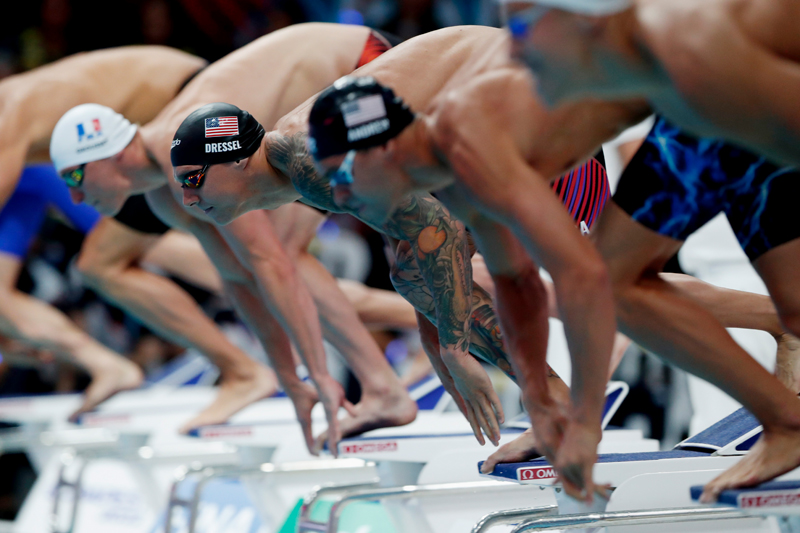Swimming performance: lateral thinking for better starts

In pool swimming, every aspect of performance needs to be optimized to achieve victory, particularly at more elite levels of competition. Obviously, swimming fitness, stroke technique, pacing and efficient turns are all essential for maximizing performance. However, relative to its duration, the start technique is particularly important. Depending on the race length, the starting phase of swim race is reported as contributing from 0.8% to 26.1% of the total event duration(1). Unsurprisingly therefore, the swim start – everything from the initial leap off the blocks, to the flight through the air, water entry and underwater glide – has come under a great deal of scrutiny for ways to make any of these elements more efficient in order to shave even tenths of a second off race times.
Analyzing water entry
One of the elements that has received particular attention in recent years is the technique of water entry – ie the angle, orientation and depth of water penetration following initial contact with the water surface. In a 2018 study, researchers compared two different commonly-used entry styles: the flat and the pike style(2). The flat style has a quick entry into the water using a flatter body position and earlier stroking, whereas the pike style creates a smaller hole for water entry with less friction and higher velocity due to the influence of gravity. It found that there were pros and cons to both, but that what matter most for performance was the total flight distance through the air (more being better), which in turn depended or excellent impulse and power off the block.
Lateral thinking
When discussing water entry technique, it’s invariably the angle of entry (shallow or deeper) that is considered the key variable. Last year however, an international team of researchers from China and New Zealand proposed a radically different approach – a so-called ‘lateral entry’ technique(3). In a conventional water entry, the vertical angle of entry varies but entry is always parallel to the water surface. However, in a lateral entry technique, the swimmer rotates his or her body during the process of leaving the start block so that the entry to the water can approach anything up to a 90-degree rotation (see figure 1). Seen from head on, the swimmer’s shoulders would not remain parallel to the water surface but instead be aligned at an angle anything up to right angles with the water surface!
Figure 1: Standard vs. lateral water entry
You need to be logged in to continue reading.
Please register for limited access or take a 30-day risk-free trial of Sports Performance Bulletin to experience the full benefits of a subscription. TAKE A RISK-FREE TRIAL
TAKE A RISK-FREE TRIAL
Newsletter Sign Up
Testimonials
Dr. Alexandra Fandetti-Robin, Back & Body Chiropractic
Elspeth Cowell MSCh DpodM SRCh HCPC reg
William Hunter, Nuffield Health
Newsletter Sign Up
Coaches Testimonials
Dr. Alexandra Fandetti-Robin, Back & Body Chiropractic
Elspeth Cowell MSCh DpodM SRCh HCPC reg
William Hunter, Nuffield Health
Keep up with latest sports science research and apply it to maximize performance
Today you have the chance to join a group of athletes, and sports coaches/trainers who all have something special in common...
They use the latest research to improve performance for themselves and their clients - both athletes and sports teams - with help from global specialists in the fields of sports science, sports medicine and sports psychology.
They do this by reading Sports Performance Bulletin, an easy-to-digest but serious-minded journal dedicated to high performance sports. SPB offers a wealth of information and insight into the latest research, in an easily-accessible and understood format, along with a wealth of practical recommendations.
*includes 3 coaching manuals
Get Inspired
All the latest techniques and approaches
Sports Performance Bulletin helps dedicated endurance athletes improve their performance. Sense-checking the latest sports science research, and sourcing evidence and case studies to support findings, Sports Performance Bulletin turns proven insights into easily digestible practical advice. Supporting athletes, coaches and professionals who wish to ensure their guidance and programmes are kept right up to date and based on credible science.









